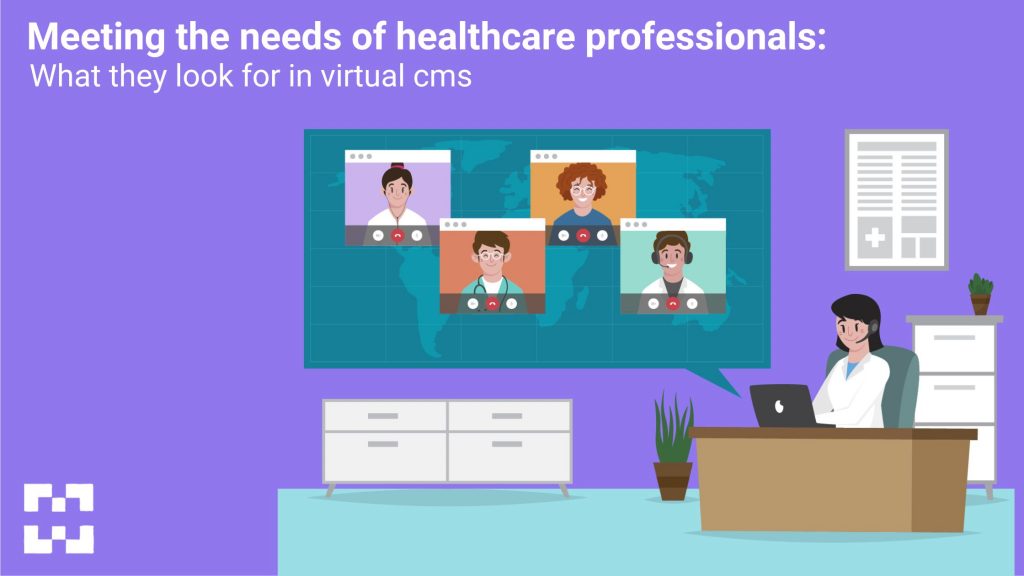
Introduction
Continuing Medical Education (CME) is a critical component of healthcare professionals’ ongoing training and development. It helps them stay up-to-date with the latest medical advancements, evidence-based practices, and emerging healthcare trends. In recent years, virtual CMEs have gained popularity, offering healthcare professionals the flexibility and convenience to engage in education from anywhere. However, to make these virtual CMEs effective and engaging, it’s essential to understand what healthcare professionals are looking for. In this blog, we will explore the key factors that matter to healthcare professionals when participating in virtual CME activities.
1-Quality Content
One of the primary factors that healthcare professionals consider when attending virtual CMEs is the quality of the content. They expect relevant and up-to-date information that can enhance their clinical knowledge and skills. Content should be evidence-based, peer-reviewed, and aligned with best practices in the medical field. Furthermore, healthcare professionals appreciate CMEs that offer a variety of formats, such as lectures, case studies, interactive discussions, and hands-on workshops, to cater to diverse learning styles and preferences.
2-Interactivity and Engagement
Virtual CMEs can be just as engaging as in-person events if designed thoughtfully. Healthcare professionals are more likely to be satisfied with virtual CMEs that include interactive elements, such as live Q&A sessions, polls, quizzes, and opportunities for networking and collaboration. Interaction not only keeps participants engaged but also allows them to ask questions and clarify doubts, making the learning experience more rewarding.
3-Convenience and Accessibility
One of the main advantages of virtual CMEs is their convenience and accessibility. Healthcare professionals value the ability to access CME content from their homes, offices, or even on-the-go. However, it’s crucial that virtual CME platforms are user-friendly and compatible with various devices and operating systems. Professionals look for CMEs that can be accessed through a web browser, mobile app, or any other preferred platform without technical glitches or barriers.
4-Flexibility and Scheduling Options
Virtual CMEs should respect the busy schedules of healthcare professionals. Many doctors, nurses, and other healthcare providers have irregular working hours, so they appreciate CME programs that offer flexibility in terms of when and how they can access the content. On-demand access to recorded sessions is often preferred, as it allows professionals to review the material at their own pace.
5-CME Credit and Certification
For most healthcare professionals, CME credits are essential to maintain their licenses and certifications. Virtual CMEs should offer a straightforward process for tracking and obtaining these credits. The platform should be able to provide certificates of completion and ensure that the CME content aligns with the requirements of relevant licensing boards and professional organizations.
6-Cost-Effective Options
Cost is a significant factor for healthcare professionals, especially those who are responsible for covering their own CME expenses. Virtual CMEs can offer cost-effective alternatives to in-person events, as they eliminate the need for travel, accommodation, and other associated costs. Professionals look for reasonably priced virtual CME options that provide good value for their investment.
7- Support and Resources
When participating in virtual CMEs, healthcare professionals may encounter technical issues or have questions about the content. A responsive and helpful support team is crucial in ensuring a smooth learning experience. Additionally, access to supplementary resources, such as articles, e-books, or online forums for further discussion, can enhance the educational value of the CME program.
Conclusion
Virtual CMEs have become an integral part of the professional development of healthcare providers. To meet the needs of these professionals, virtual CME organizers must prioritize quality content, interactivity, convenience, flexibility, CME credit options, affordability, and robust support. By doing so, they can ensure that healthcare professionals continue to receive the education they need to provide the best possible care to their patients while maintaining their professional credentials.





